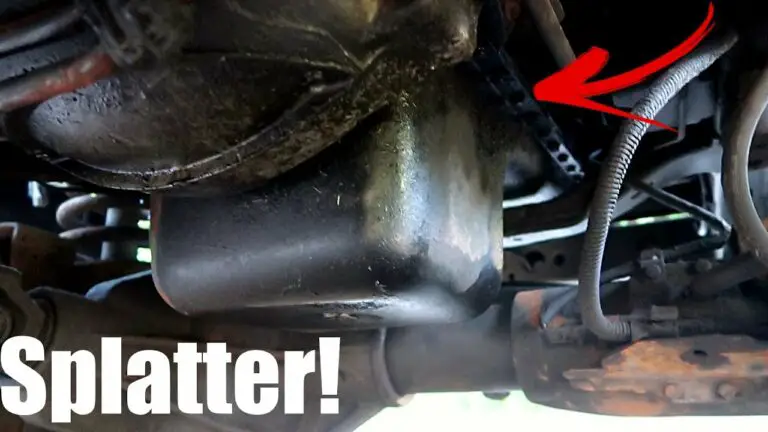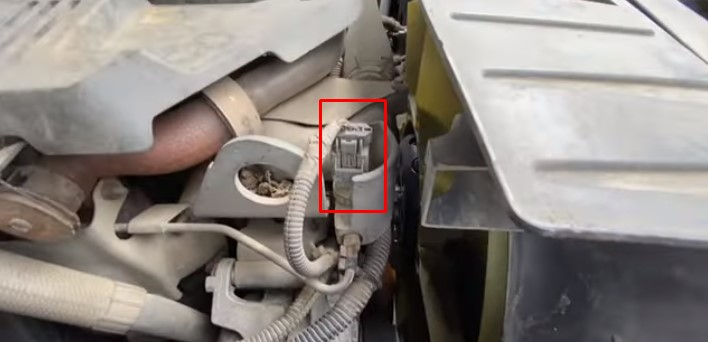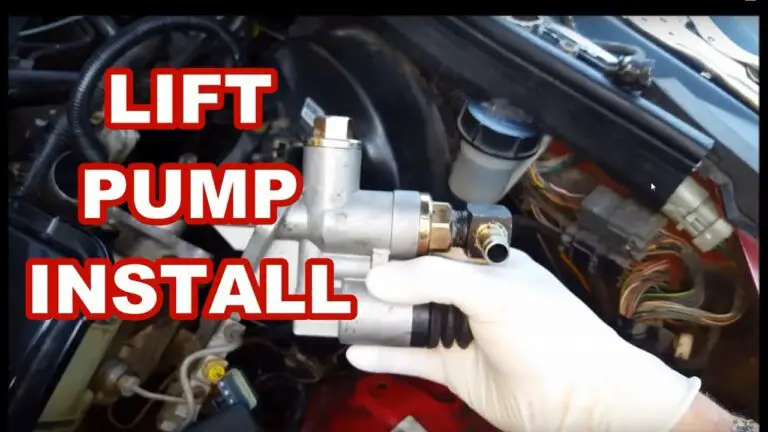Dodge Ram 2500 Limp Mode Reset
Limp mode is a safety feature in Dodge Ram 2500 vehicles that is designed to protect the engine from further damage when there is an issue with the powertrain. To reset limp mode, you must first identify and address the underlying cause of why it has been activated. Common causes are low oil pressure or coolant level, sensor failure, transmission issues, and fuel delivery problems.
Once these issues have been resolved, you can then reset limp mode by turning off your vehicle’s ignition switch for at least five seconds before restarting it again. Additionally, clearing out any stored trouble codes may be necessary to fully reset limp mode on some makes and models of trucks.
If you’ve ever encountered the dreaded limp mode in your Dodge Ram 2500, then you know how frustrating it can be to get back on the road. Fortunately, resetting the limp mode is actually quite simple and can be done in just a few steps. All you need to do is turn off your vehicle’s engine and wait for one minute before restarting it – this should reset both the computer system and the transmission allowing your Dodge Ram 2500 to run properly again.
How To Reset DEF Message – Dodge Cummins
How Do I Get My Dodge Out of Limp Mode?
If your Dodge is stuck in limp mode, it can be a frustrating experience. Limp mode is a safety feature designed to reduce engine power and limit the vehicle’s speed. It usually indicates that there’s an issue with one of the sensors or systems related to the engine or transmission control unit (ECU/TCU).
To get your Dodge out of limp mode, you need to identify and address the underlying problem. First, check for any stored diagnostic codes via an OBD-II reader; this should help you pinpoint what component needs attention. Common causes include faulty oxygen sensors, mass airflow meters, spark plugs or coils, fuel injectors, catalytic converters, vacuum leaks etc., so these are possible areas to investigate if no code has been found yet.
If needed – depending on which component may be affected – further diagnostics may have to be done by a professional mechanic using specialized tools like oscilloscopes and scan tools in order to determine exactly what’s wrong with your Dodge car or truck. Once the root cause of limp mode has been identified and addressed appropriately then resetting the ECU/TCU will often restore regular driving conditions again without any issues.
What Causes Ram 2500 to Go into Limp Mode?
The Ram 2500 is a popular work truck known for its power and reliability, but sometimes it can go into limp mode. Limp mode—also often referred to as “limp home” or “fail-safe” mode—is an emergency protection feature that limits the overall performance of your vehicle in order to prevent further damage. It is usually triggered when one or more components in the engine have failed or are malfunctioning.
Some common causes of limpmode include faulty wiring, bad sensors, worn out spark plugs, clogged fuel filters, low oil pressure, overworked transmission fluid and coolant leaks. In some cases, a lack of proper maintenance could also be responsible for triggering limp mode on your Ram 2500. If you suspect this may be the case with your own vehicle, it’s important to take action immediately by having any necessary repairs done right away; failing to do so could result in expensive repair bills down the line.
How Do I Reset My Dodge Ram 2500?
If you own a Dodge Ram 2500, resetting your vehicle can be an easy process. The first step is to turn off the engine and disconnect the negative battery cable from its terminal on the battery. This will prevent any electrical systems in your truck from being damaged during the reset process.
Once you have disconnected the negative cable, press and hold down both of the power window buttons located on either side of your center console for at least 10 seconds. After that time has elapsed, reconnect the negative cable to its terminal and start up your truck’s engine again. You should now see all warning lights reset themselves automatically as well as any other settings related to previous trips or maintenance that may have been stored in memory.
Congratulations – you’ve successfully reset your Dodge Ram 2500!
How Do I Reset My Cummins?
Resetting your Cummins engine can be a great way to improve performance, restore factory settings, and increase its lifespan. If you’ve recently purchased a Cummins engine or have been using one for some time now, chances are that you may need to reset it at some point. Here we will discuss the steps necessary to reset your Cummins engine properly so that it is in top condition and ready for use.
First off, make sure that the ECM (Engine Control Module) of your Cummins has been disconnected from power sources such as batteries or other electrical systems. This will ensure that any current software settings are not kept during the reset process. Once this is done, locate the diagnostic link connector which should be located near the engine bay on most models.
Connect this cable into both the computer port and ECU port in order to establish communication between them.
Now download a copy of your vehicle’s manufacturer programming software onto your laptop or desktop computer with an internet connection before opening up “Diagnostic Link 8” which can be found within this programming file after installation is complete. You may then select “reset parameters” from within Diagnostic Link 8 followed by selecting all of the parameter values listed below based on specifics regarding your particular model: turbocharger wastegate setting; fuel injection pump timing; valve lash adjustment; idle speed points; injector replacement codes; exhaust gas recirculation rate/temperature/pressure monitor parameters etc..
After making these selections click “execute” and wait until all processes have completed successfully prior to disconnecting cables once again and re-connecting power resources if applicable before starting up your Cummins powered machine!
What Triggers Limp Mode?
Limp mode, sometimes referred to as ‘limp home’ mode, is a protective setting which can be triggered by various problems with your vehicle. When this happens, the car will limit its performance in order to reduce the risk of further damage and minimize repair costs. Common causes of limp mode include faulty sensors or electrical components such as oxygen sensors, mass air flow meters, camshaft position sensors and throttle position sensors.
In addition, malfunctioning fuel injectors and catalytic converters can also lead to limp mode being activated. If your car enters into this state you may notice reduced engine power or poor acceleration along with illuminated warning lights on the dashboard. It is important that you take your car for diagnosis if it enters into limp mode as this could indicate an underlying issue that needs attention before long-term damage occurs.

Credit: www.diehlauto.com
5 Mph Max Service Def System Reset
The 5 Mph Max Service Def System Reset is an important procedure that helps keep your vehicle running smoothly. It’s designed to reset the system after a major service, such as an oil change or spark plug replacement. This reset ensures that all of the sensors and safety systems in your car are working properly so you can enjoy a safe and reliable ride.
The process takes only a few minutes and should be done regularly for optimal performance.
How to Get a Dodge Out of Limp Mode
If your Dodge is in limp mode, the first thing you should do is check the engine codes. This can be done by connecting an OBD2 scanner to your vehicle’s onboard diagnostic port and retrieving any stored fault codes. Once you have identified the cause of limp mode, such as a faulty sensor or incorrect fuel delivery, you can begin troubleshooting in order to fix the issue and get your Dodge out of limp mode.
Depending on what caused your vehicle to go into limp mode, it may require replacing components or resetting certain settings within its computer system.
Dodge Ram 1500 Limp Mode Reset
If your Dodge Ram 1500 is stuck in “Limp Mode” due to a fault within the vehicle’s transmission system, you can reset it by disconnecting the battery for 30 minutes and then reconnecting it. This will reset all of the stored diagnostic codes and allow the transmission to run normally again. It’s important to note that this procedure should only be done if there are no underlying issues with your transmission, as limp mode may indicate a serious problem that needs professional attention.
Conclusion
The Dodge Ram 2500 limp mode reset is a simple process that can be performed by any driver. Knowing how to reset the limp mode on a Dodge Ram 2500 can help you avoid costly repairs and get back on the road quickly. If you suspect your truck may be in limp mode, make sure to check for codes and follow the steps outlined above to properly reset it.
With regular maintenance and careful driving, you should never have to worry about your vehicle entering into limp mode again!








